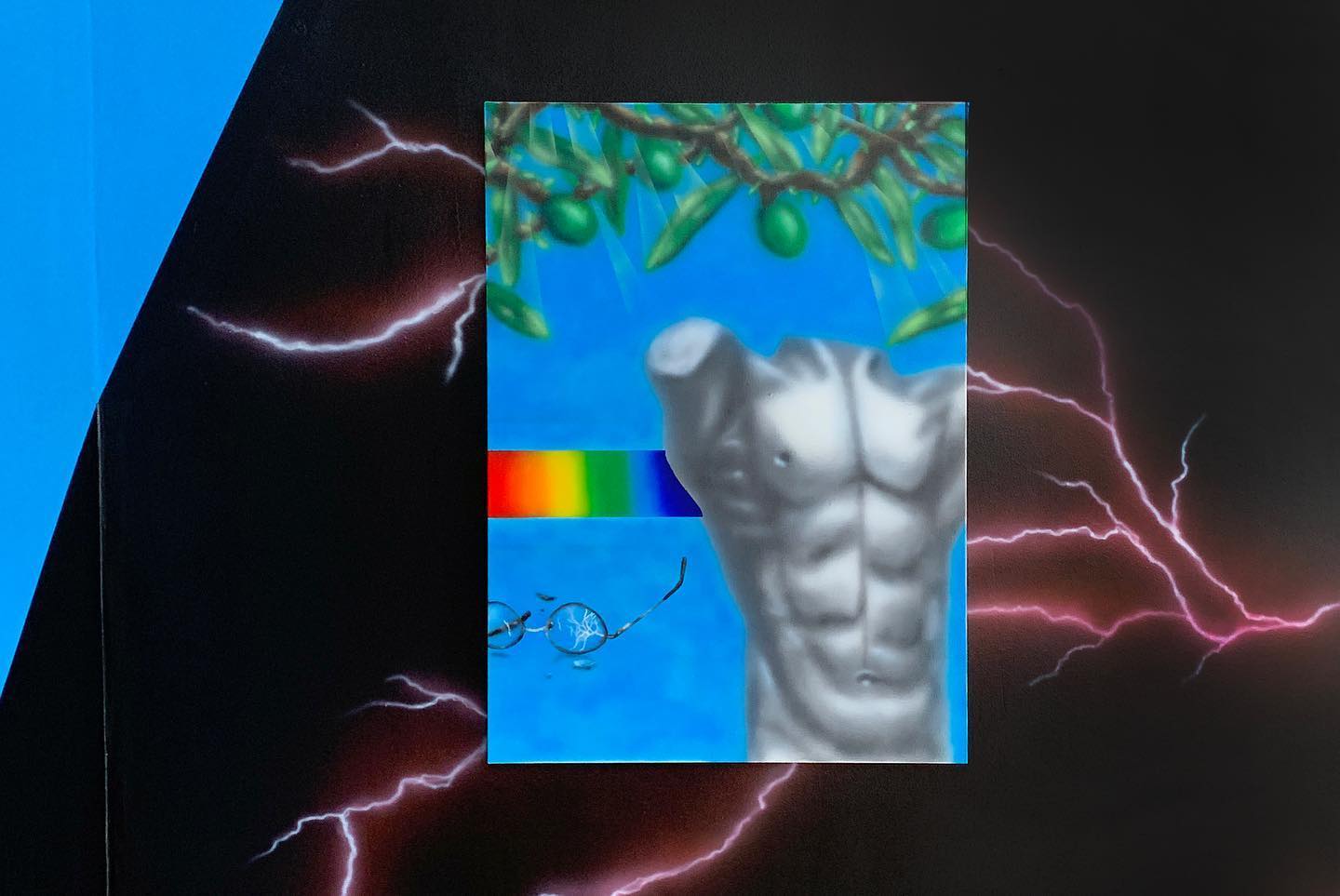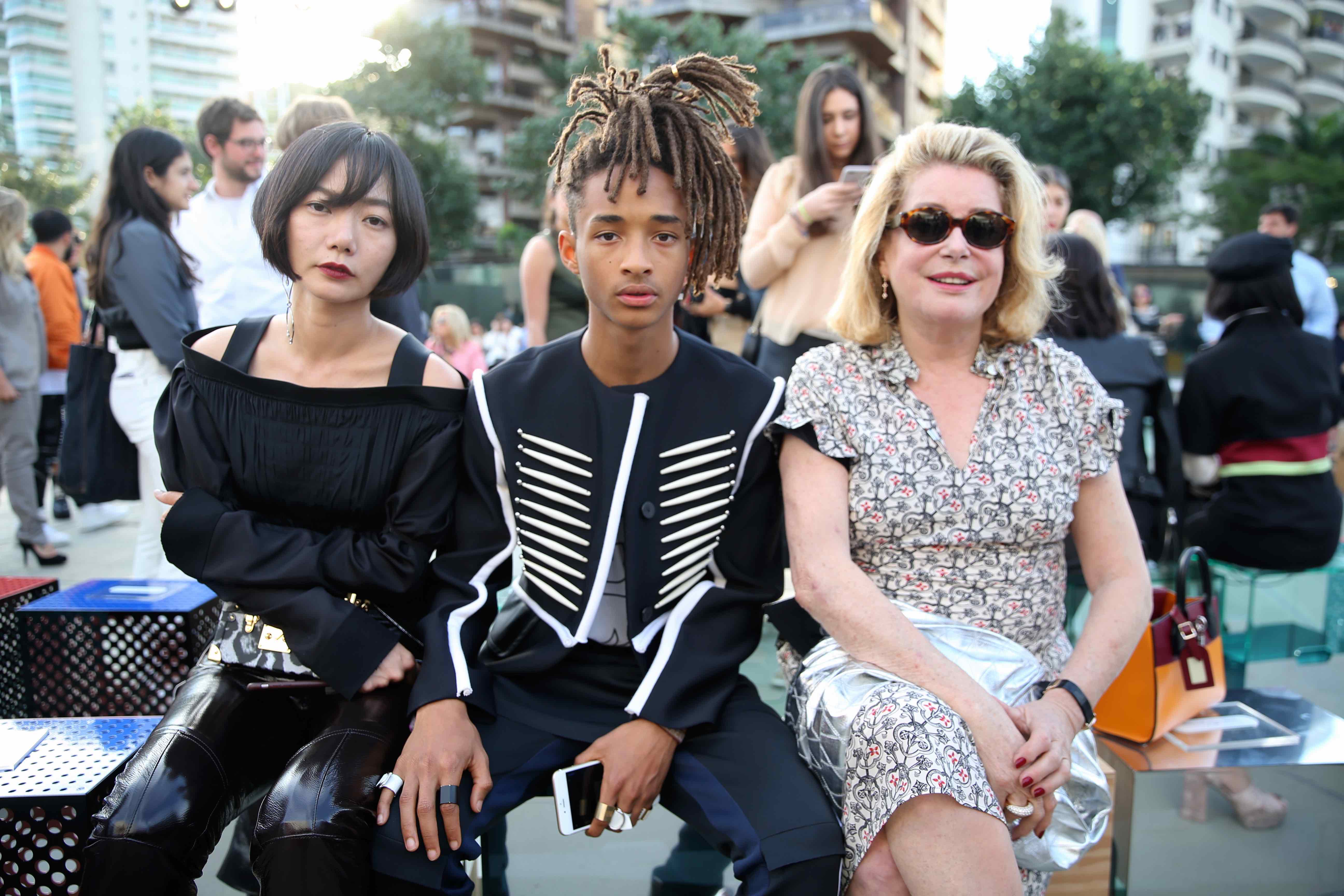“A Bolt from the Blue” is Filippo Cegani’s first solo exhibition. The title is ambivalent, referring to the aesthetic of the wall painting that serves as a background for the display, the current unexpected global situation, and the subjects and stories portrayed in the paintings.
In his artistic practice, Cegani paints metaphors of conversations or ideas, with objects and subjects juxtaposed in a metaphysical way, focusing his imaginary on everyday toxic masculinity and epic gestures.
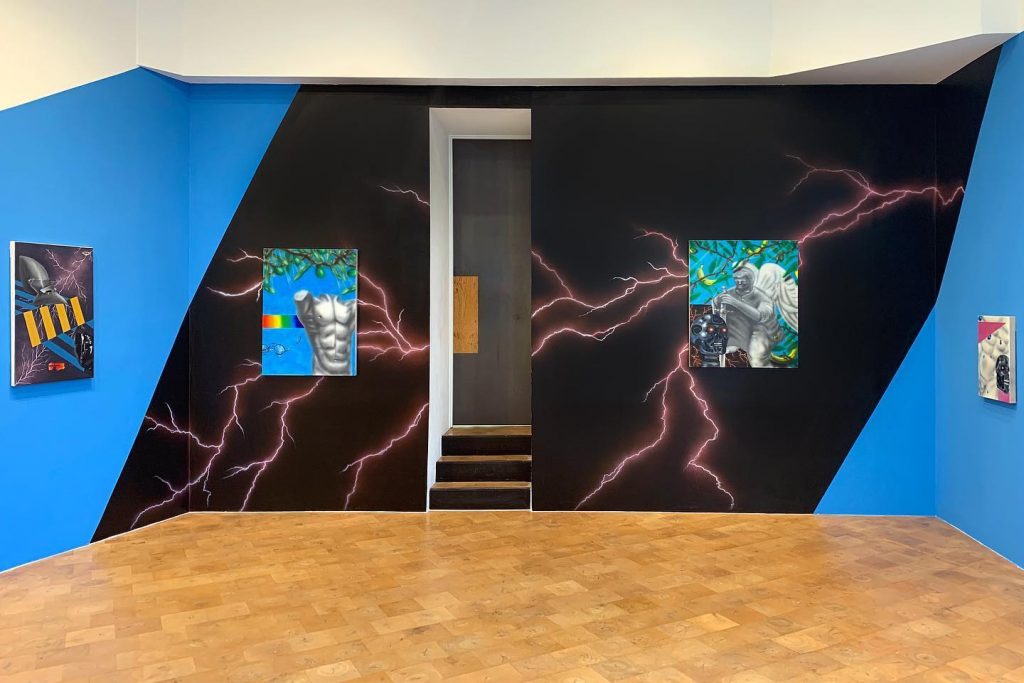
Most recently, Cegani became fascinated with local new stories from small towns in Italy that he came across online. Reading stories of strangers who could essentially gain fame on platforms meant for a small and specific local populace, but that could be enjoyed by the whole world felt, to Cegani, like something deeply ironic and niche. The result of this is a body of work that focuses on ironic stories that can happen to the everyday man in which he tries to prove himself; in essence by way of showing his masculinity and prevalence.
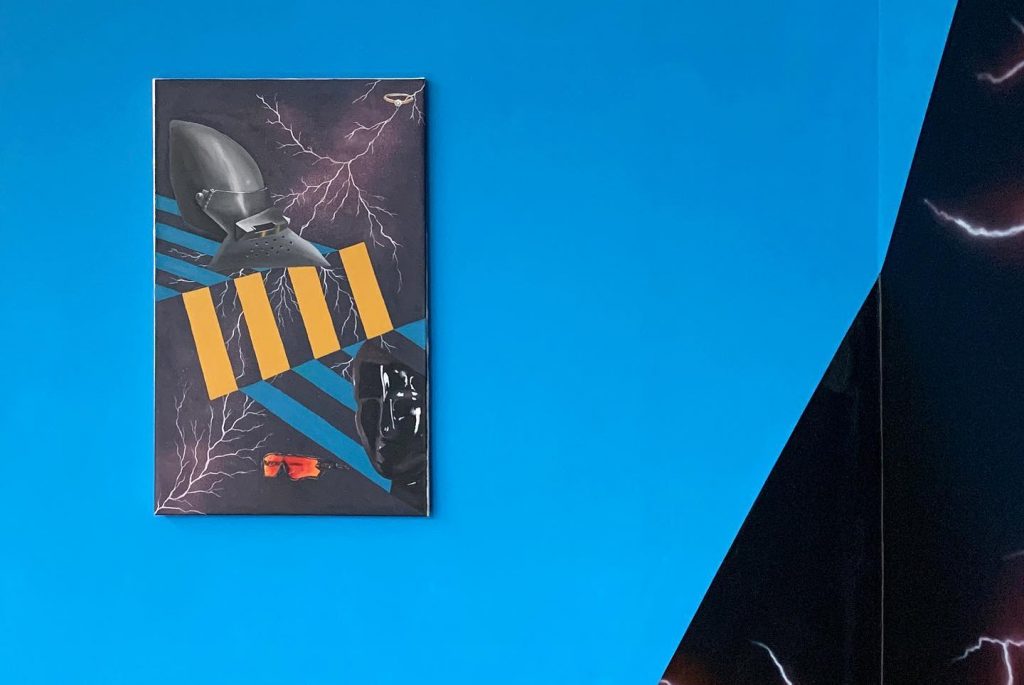
In Cegani’s paintings, as in in the local news, the figure of the alpha male in rural Italian culture is placed at the centre of attention. Yet, instead of being heroized these figures are made into a joke, crystallised in time by the words of bored journalist. The joke, however, is not readily perceived by the figures and therefore they become heroes in their own minds.
Cegani’s paintings are mysterious and bursting with symbolism, in a juxtaposition of unrelated objects and subjects that only truly and fully unfold when one reads each work’s title.
Violent fistfight between two 17 years old in a cheap nightclub in Paderno Dugnano over a spilled banana and rum cocktail is a common story of violence between bored young adults from the Italian suburbs. Through a common gesture they become guardians of antiquated ideals (the marble angel), whilst at the same time guarantor of the respect achieved in the future (the Terminator). This moment of seemingly epic fighting is suspended against an ironic background of bananas and rum, referencing the cause of the dispute.
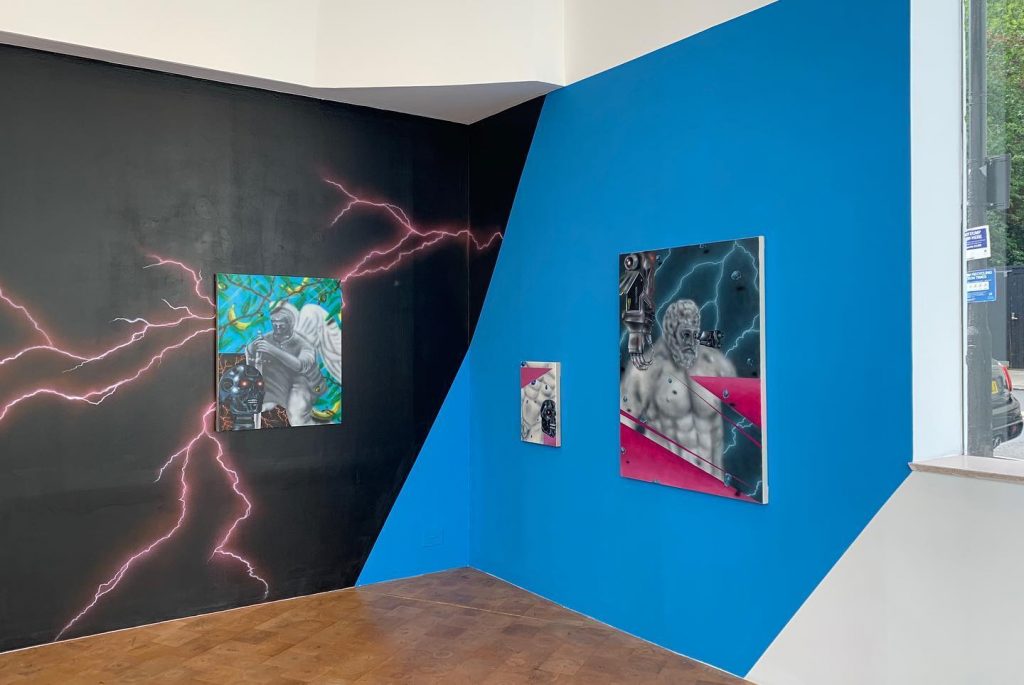
57 years old has a stroke on the finishing line of the Desenzano del Garda marathon as he was trying to impress his wife is again depicting an attempt of heroism by the ordinary man, trying to infuse respect in his family through his participation to a marathon, the extreme proof of physical superiority. This attempt eventually leads to his sudden death, as in Greek and Roman epic tragedies. The finishing line becomes a (colour) spectre, as much as the protagonist of the heroic gesture at the end of his life. The broken glasses enhance the imaginary of the character, who is otherwise faceless and anonymous, and the raised arms that are cut off become a metaphor of the entire story.
In Chioggia, a Bodybuilder hit by thunder during a storm in the middle of the night. (Insomnia during a stormy night) the protagonist is indeed struck by a bolt from the blue. His insomnia brought him outside, with the feeling of being invincible even during a stormy night. His body is perfect and sculped out of marble, his senses enhanced by the bionic strong arm and the nocturnal visor, but nonetheless he can’t stop a thunder from defeating him.
Guvano beach, fight between nudists and locals ends badly, three arrested tells the story of historical dispute around the myth of the naturist beach in the Cinque Terre. Years ago, an epic fistfight in between travellers enjoying the beach naked and local people ended up with the intervention of the Police, who managed to arrest a few fighters. This story is a metaphor of the everyday ridiculous tensions in between people trying to change the status quo and explicitly provoking the reaction of local inhabitants ready to fight to insure the respect of traditions.
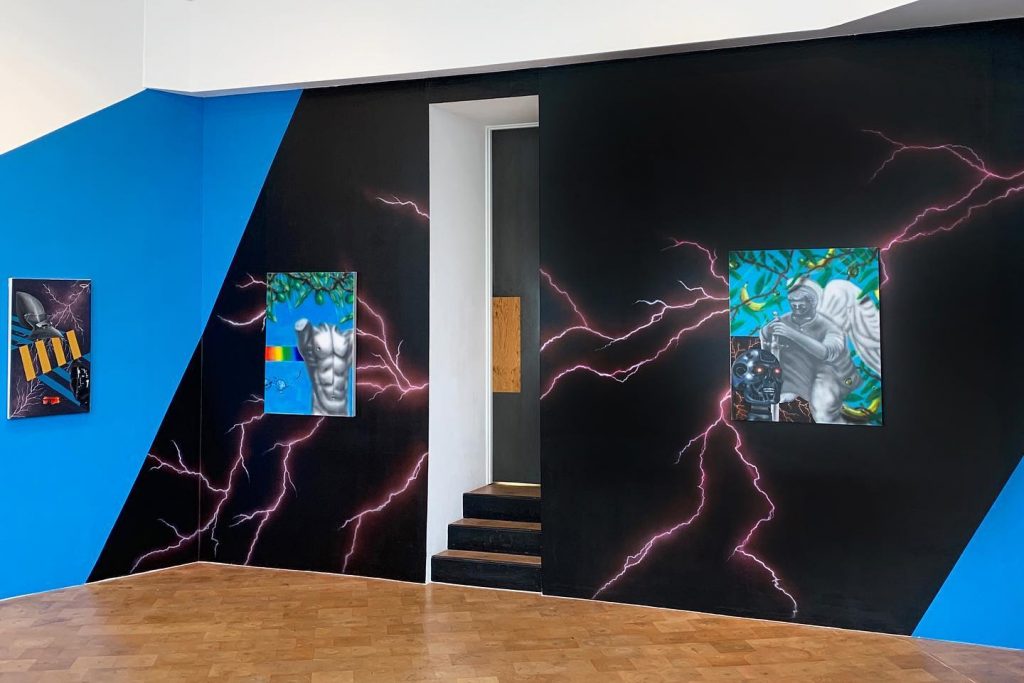
In Jaw Dropping Beauty the masculinity is described by armours and fetish gear, with these items have the peculiarity of both masking an individual as well as protecting him, just as the stereotype of the average man should have been from post war scenarios and afterwards. The armours typically portrayed in Cegani’s paintings are the ones that were used in parades and not in war, an early example of man’s vanity.
